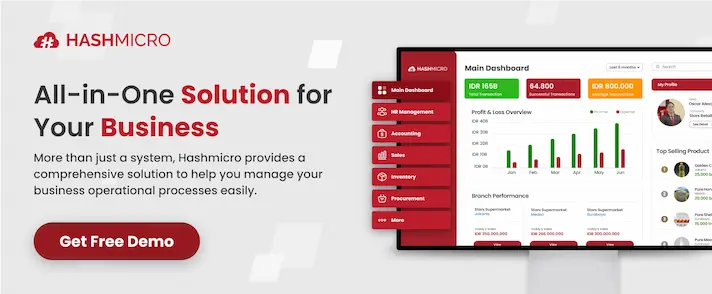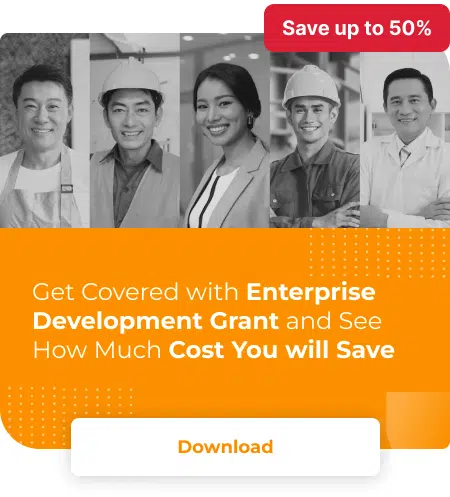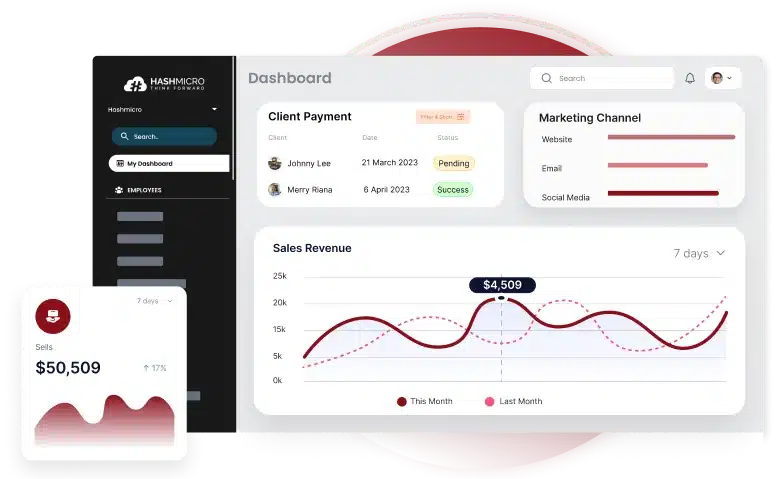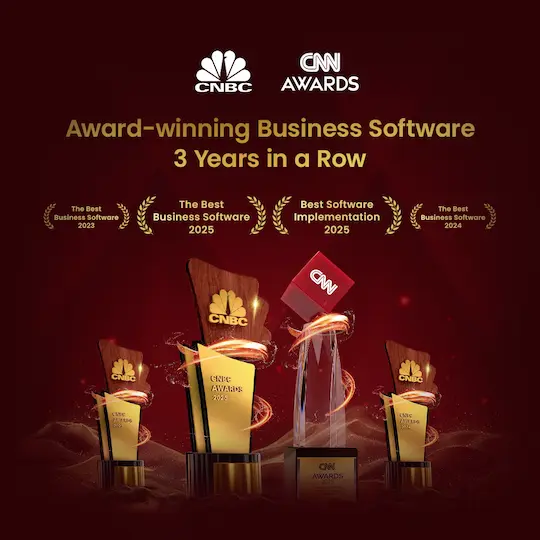Did you know that using BANT, a proven framework focused on Budget, Authority, Need, and Timeline, can significantly sharpen your lead qualification process? It’s a simple yet powerful approach that ensures your team pursues the leads most likely to buy.
But here’s something even more powerful: companies that pair a structured sales approach like BANT with a good CRM can boost their sales productivity by as much as 34%, with lead conversions rising up to 300%. That’s the difference between simply filling your pipeline and actively closing deals.
So, if you’d like to save time, resources, but also reap significant results, keep reading this article to find out what BANT is, how to implement it, and which CRM tool is best for your business!
Key Takeaways
|
What is BANT?
BANT is a lead qualification method used by salespeople to assess whether a potential customer aligns well with their product or service. This framework evaluates a lead based on four key criteria to gauge their likelihood of conversion.
What does BANT mean?
BANT stands for Budget, Authority, Need, and Timeline. These four categories help determine the suitability of a lead:
- Budget: Does the prospect have the financial resources to purchase your product or service?
- Authority: Who in the organization has the power to make purchasing decisions?
- Need: Does the prospect have a challenge that your offering can address?
- Timeline: What is the prospect’s timeline for making a purchasing decision?
Rather than spending days or weeks assigning scores to leads based on their interactions with marketing and sales materials, BANT provides salespeople with instant and insightful feedback on whether a prospect has the resources, interest, and ability to make a purchase.
Benefits of Using BANT for Lead Qualification
BANT is a time-tested method that remains widely used, and for good reason. Here are some advantages sales teams can gain from using BANT:
- Stronger lead qualification: BANT allows sales reps to pinpoint leads with a high potential to convert.
- Greater sales efficiency: By avoiding time spent on low-quality leads, reps can concentrate on closing more deals with better results.
- Smarter prioritization: BANT supports informed decisions about which leads to pursue, based on key factors that influence buying readiness.
- More targeted conversations: It prompts reps to explore each prospect’s specific situation, uncovering insights that help them tailor their pitch and focus on the most promising opportunities. Therefore, the deal pipeline is also improved.
Challenges of Using BANT
Although BANT works well for many organizations, it’s not without its limitations:
- Too focused on the transaction: Because BANT emphasizes details like budget and timeline, sales reps might overlook the buyer’s deeper needs and challenges. This can result in pitches that feel generic and fail to connect with prospects on a meaningful level.
- Can hinder relationship building: When BANT is used rigidly, like a checklist or script, it can prevent reps from forming genuine connections. A more natural, conversational approach is often more effective in building trust.
- Limited to known problems: BANT works best when prospects are already aware of their problems and are actively looking for solutions. It doesn’t encourage uncovering hidden issues or educating buyers about needs they haven’t yet identified.
- Less effective for complex sales cycles: BANT assumes a single decision-maker and a defined timeline, which doesn’t always fit lengthy, multi-stakeholder B2B sales processes where decisions take time and involve many players.
How to Use the BANT Framework
We’ve already covered the overview of the BANT framework. Now, the question for those interested to apply it, how do you implement it in your daily practice? Below are six ways to make sure your implementation can succeed.
1. Look beyond the dollar figure when discussing the budget.
In the past, qualifying by budget was simpler with fixed license pricing. But modern SaaS models, ranging from SGD 15 for basic plans to over SGD 20,000 for enterprise solutions, make the budget conversation more complex.
Rather than treating budget as a fixed limit, guide the prospect to think in terms of ROI. Help them see the value they can gain, not just the upfront cost.
Pro tip: Ask about their expected ROI. If it matches what your solution can deliver, tailor your pitch around outcomes. But if there’s a major gap between their budget and your pricing, or if they’re fixed on a price you can’t meet, it’s okay to disqualify early.
2. Identify the real decision-makers
Most B2B deals involve more than one person. Even if one signs the contract, others influence the decision. For example, in a Singapore-based enterprise, you might need input from finance, IT, procurement, or operations before anything moves forward.
Map out who’s involved, their roles, decision-making power, and how to reach them. Your main contact might champion your solution, but if they don’t have the authority, you’ll need to connect with someone who does.
Pro Tip: Ask early, “Besides yourself, who else needs to be involved in this decision?” It’s a polite but effective way to uncover the full decision chain without overstepping.
3. Gauge how urgent the problem really is
Not every business pain leads to immediate action. Just because a prospect says they have a need doesn’t mean it’s a priority. You need to assess how motivated they are to solve it—and what’s at stake if they don’t.
For example, a logistics firm might admit their current project tracking system causes delays, but if they’re in the middle of renewing a major contract or undergoing ISO certification, fixing the system might take a backseat.
Even real problems get deprioritised when other business goals are more pressing.
Pro Tip: Ask, “What happens if this issue isn’t solved this quarter?” This helps reveal urgency, competing priorities, and how serious they are about making a move.
4. Clarify the decision timeline
Once you understand the budget, key stakeholders, and the problem’s importance, the next step is to learn how soon the company plans to decide. Timing affects everything, from how you manage your pipeline to when you follow up.
For instance, a mid-sized retail chain might be eager to implement a new POS system, but if their financial year closes in March, they may hold off on new spending until after the next budget cycle. On the other hand, a startup facing operational bottlenecks may need a solution deployed this month to support growth.
Pro Tip: Ask, “Is there a specific deadline or event driving this timeline?” The question reveals whether urgency is real or if the deal is likely to stall.
5. Stay in the loop through informal channels
This step isn’t tied to a specific part of BANT, but it’s key to staying ahead of delays, objections, or hidden decision-makers. Keeping tabs on your prospect outside of scheduled calls gives you valuable context that can shape your sales approach.
Let’s say, if you’re selling to a local fintech firm and notice on LinkedIn that they’ve just hired a new COO or announced an expansion into Malaysia, that could signal a shift in priorities. Alternatively, it could open the door for a new use case your product can solve.
Pro Tip: Follow your prospect’s company updates, press releases, and team changes. These signals often tell you more than what’s said in a meeting. It can also help you qualify or reframe your pitch with sharper insight.
6. Use smart tools to track every step
Managing multiple prospects at different stages can get messy without the right system. You’ll need a reliable way to monitor conversations, follow-ups, objections, and next steps, especially when applying BANT across a busy pipeline. A sales automation tool is one way to do it.
Pro Tip: With HashMicro CRM, you can view all deals, tasks, and progress updates in one dashboard. Want to see if it fits your budget? Click the banner below to check out the price and explore its full capabilities.
How Not to Use BANT
BANT might seem like a foolproof method to secure your leads. However, some sales experts argue that the framework doesn’t always reflect modern selling realities. Common concerns include:
- Whether budget discussions overshadow the true value of a solution
- Prospects overstating their authority in the buying process
- Company needs that change frequently or are loosely defined
- Timelines that shift without notice
Because of these issues, some teams have adopted alternative frameworks like GPCT (Goals, Plans, Challenges, Timeline). Still, BANT remains one of the most recognized and widely used qualification models in sales.
That said, BANT works best when used as a flexible guide, not a rigid checklist. The goal is to spark meaningful conversations and not just tick boxes. Sales reps struggle when they rely on scripts instead of listening and adapting to prospects.
Let’s take a look at this example below:
Rep: “Has a budget been allocated for this software?”
Prospect: “Not yet, but we’re discussing it at the next finance meeting this Thursday.”
Rep: “Alright. And who’s in charge of approving the purchase?”
Prospect: “That would be our regional head, Mr. Lim.”
Rep: “You mentioned you’re currently handling outlet performance and stock transfers manually across your stores in Bugis, Tampines, and Jurong. And it’s been hard to keep up.”
Prospect: “Exactly. The process is very tedious.”
Rep: “Got it. Is there a timeline you’re aiming for to get a system in place?”
Prospect: “Hopefully before the Q4 sales push, maybe around September.”
Rep: “Great. Would you be open to a demo next week to see how our system can streamline those operations?”
Prospect: “Let me look into a few other options first. I’ll get back to you in a couple of weeks.”
And just like that, the deal is gone.
So, what went wrong?
This wasn’t a conversation; it was an interview. The rep stuck to surface-level questions without building real rapport or exploring deeper motivations.
They also missed key openings: Why is Mr. Lim the decision-maker? What does the internal approval process look like? Why is Q4 so critical? Are they expecting a surge in demand or launching a campaign?
Therefore, the real goal is to build rapport first, and ask follow-up questions that soon turn into a mutually beneficial deal for both your company and the prospect.
BANT Lead Qualifications Questions
To help you ask better open-ended questions using BANT, here are some practical examples tailored for local business conversations:
Budget
To find out if your prospect has the financial capacity for your solution, try questions like:
- “How does your team usually handle budgeting for IT or operational tools like this?”
- “When purchasing platforms to improve areas like sales or inventory tracking, what price range do you usually consider?”
- “Has your department already set aside a budget for this financial year to address this issue?”
- “Given how this problem affects daily operations, like stockouts or delayed reporting, what kind of budget would make sense to fix it?”
What to listen for: If their expectations fall far below the average pricing of your solution. For example, if they expect to pay $100/month for a tool that typically starts at $500/month, it could be a sign they’re not ready or not the right fit.
Authority
To understand who holds the decision-making power in the organisation, consider asking:
- “Who usually signs off on solutions like this, would it be someone from finance, operations, or another team?”
- “Besides yourself, are there other team members or departments involved in the decision process, like procurement or regional heads?”
- “How do you typically evaluate vendors for platforms that impact daily operations, such as this one?”
- “Once your team agrees on a solution, what internal approvals or steps come next, does it go through finance or a management committee?”
What to listen for: If your prospect says decisions go through a regional GM, CFO, or procurement board, but they don’t have direct access to them, that’s your cue to help them facilitate that next conversation or get introduced to someone higher up.
Need
To understand whether your prospect is dealing with problems your solution can address, consider asking:
- “Could you share what specific bottlenecks or issues you’re facing right now? For example, in procurement approvals or inventory tracking?”
- “How are these challenges affecting your team’s productivity or customer experience? Are there delays, errors, or missed opportunities?”
- “If things were running smoothly, what would that look like for your department or business unit?”
- “How would fixing this issue impact your KPIs, like order fulfilment time, operational cost, or sales performance?”
What to listen for: Their answers will show whether your solution fits their needs. Just as importantly, this context helps you customize your pitch, whether you’re addressing order accuracy in an F&B chain or reducing manual reporting in a logistics company.
Timeline
To get a sense of how soon your prospect plans to make a decision, try asking:
- “Is there a target date you’re aiming for to have a solution in place?”
- “Are there any internal deadlines, like a new store launch or financial year planning, that might affect your timeline?”
- “If we’re able to show how our solution solves your current challenges, what would the next steps look like on your end?”
- “Would it help if we sent over a proposal, a cost breakdown, or additional case studies in the next week or two?”
What to look for: Their answers can give you a clearer idea of how long the decision process might take and what materials they still need to move forward.
Keep in mind, these are just starting points. The most effective BANT questions are the ones you tailor to your offering and the prospect’s real business context.
Turning BANT Insights into Sales Action with HashMicro CRM
Knowing how to ask the right questions is a solid start. But when you’re handling multiple deals, different timelines, and multiple decision-makers, it’s easy to lose track of where each lead stands.
That’s where a good CRM actually matters.
With HashMicro CRM, your team can manage leads, track conversations, and qualify prospects based on BANT criteria. From recording budget discussions to tagging key decision-makers and setting reminders for next-step timelines, so you can qualify leads properly and follow through at the right time.
It’s built for teams that manage serious B2B sales cycles, especially in industries like trading, logistics, or professional services.
Furthermore, HashMicro CRM offers a myriad of features for your team to focus on converting prospects more readily:
- Automated Lead Scoring: Assigns scores to each lead based on activity, source, and engagement level to help you focus on the most relevant prospects.
- Activity Scheduling, Management & Reminders: Lets you log calls, set meetings, and create reminders so no prospect interaction slips through the cracks.
- Meeting Scheduling & Past Meetings Tracking: Captures every meeting detail and history to give your team full visibility on conversations with each stakeholder.
- In-Depth CRM Reports: Generates detailed reports like Lead Lifetime, Follow-Ups, and Activity KPIs to track every touchpoint in the sales process.
- WhatsApp Channel Integration: Connects your CRM with WhatsApp so you can chat, follow up, and document communication directly in the system.
- Lead Age Audit: Displays how long each lead has been in the pipeline so you can easily identify stagnant deals.
- Multi-Salesperson per Lead: Allows multiple reps to collaborate on a single lead, especially useful for accounts with complex decision chains.
- Customer, Leads & Sales Funnel Management: Organises all contacts and pipeline stages in one centralised view for better lead progression tracking.
Conclusion
BANT helps sales teams qualify leads by focusing on budget, authority, need, and timeline in every conversation. When used right, it builds stronger pipelines, better prioritisation, and more confident sales decisions.
But asking the right questions isn’t enough if you can’t track where each lead stands in real time. HashMicro CRM makes BANT easier to apply, with tools to manage every deal, deadline, and decision-maker.
It’s packed with features that help your team sell smarter, follow up faster, and close deals consistently. If you’d like to have full visibility on every deal, try the CRM trusted by decision-makers. Get your free demo today!
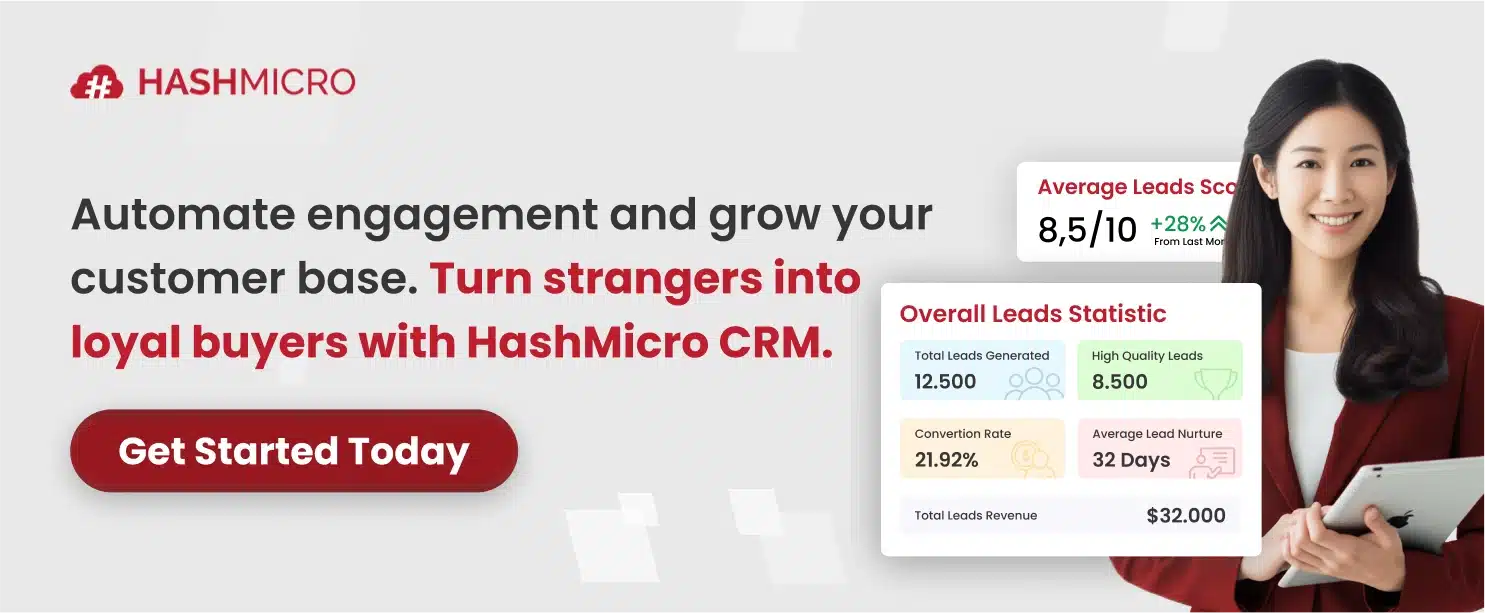
FAQ on BANT
-
What are common alternatives to the BANT framework?
There are several other lead‑qualification models, such as CHAMP (Challenges, Authority, Money, Prioritization), MEDDIC (Metrics, Economic buyer, Decision criteria, Decision process, Identify pain, Champion), and GPCT (Goals, Plans, Challenges, Timeline), that offer more nuanced approaches focused on buyer-centric conversations.
-
Can BANT still adapt to modern sales processes?
Yes. BANT can be updated for modern sales practices by reframing budget as value/ROI, being flexible in the order of questions, and using it as a conversational guide rather than a rigid checklist.
-
How can you implement BANT without sounding like you’re interrogating the prospect?
Embed your BANT questions within value-based dialogue. Share insights, ask follow‑ups, and actively listen. This turns qualification into meaningful discovery rather than a scripted audit.
-
Does BANT actually improve sales efficiency and conversion?
Yes. Sales teams using structured qualification like BANT typically boost sales productivity significantly and focus on higher‑quality leads, reducing wasted time and improving close rates.



